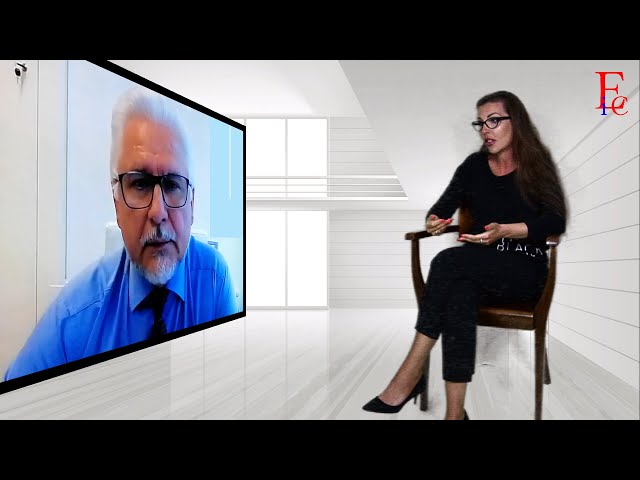10 interesting facts about plastic surgery

Is plastic surgery just a way to improve your appearance? Not necessarily! It's a fascinating field of medicine, full of surprising facts and unusual stories. From ancient attempts at nose reconstruction to modern life-changing surgeries, here are 10 interesting facts that reveal a whole new face of plastic surgery. Some of them may really surprise you!
1. the origins of plastic surgery date back to antiquity
The history of plastic surgery dates back to ancient times. Originally, it was used mainly for reconstructive and medical purposes rather than aesthetics. As early as ancient Egypt, around 2500-3000 BC, plastic surgery was known as a method of treating injuries. One of the oldest surviving medical texts describes nose reconstruction techniques, among other things.
In ancient India, the physician Sushruta, who lived around 600 BC, developed advanced techniques for reconstructive surgery. His work, known as the "Sushruta Samhita," contained detailed descriptions of reconstructive procedures, including nose reconstruction, and precise information on surgical tools. This knowledge was translated into Arabic in the 8th century and reached Europe in the Middle Ages.
The Romans also developed reconstructive surgery. Aulus Cornelius Celsus, author of the work "De Medicina," described repair techniques that form the foundation of modern plastic surgery.
2. plastic surgery and war
Wartime injuries, often very serious and complicated, necessitated the development of advanced reconstructive techniques aimed not only at saving lives, but also at restoring body function and appearance.
The greatest advances in plastic surgery occurred during World War I, when the number of severe injuries was enormous. Facial wounds, burns, amputations and deformities caused by firearms and shrapnel required new solutions. During this period, Harold Gillies, known as the father of modern plastic surgery, developed innovative techniques for facial reconstruction and skin grafting. Gillies ran specialized clinics where he treated hundreds of soldiers with facial mutilations using skin grafts and modeling techniques.
During World War II, the development of plastic surgery accelerated. The development of new weapons like flamethrowers and incendiary bombs increased the number of victims with extensive burns and deformities. Dr. Archibald McIndoe, Gillies' cousin, then developed innovative methods of treating burns and skin grafts.
3. plastic surgery for health and beauty
Modern plastic surgery is often associated with procedures to improve appearance, but its roots go much deeper and are closely related to reconstructive medicine. One of the pioneers of the field was Johann Dieffenbach, who in 1845 performed the first documented nose surgery solely for aesthetic purposes.
With technological and medical advances, plastic surgery has begun to combine both aspects. Today, it is an extremely versatile field, helping both to treat deformities and injuries and to achieve aesthetic goals.
4. the first specialist in plastic surgery - John Mettauer
The pioneer of modern plastic surgery is considered to be American surgeon John Mettauer, who began his medical practice in the early 19th century. In 1827, he performed the first documented surgery to repair a cleft palate, using surgical instruments he designed himself. This was a landmark event that ushered in a new era in reconstructive surgery.
Interestingly, Mettauer was also his first plastic surgery patient. Using his own skills, he experimented on himself and perfected surgical techniques. His approach to medicine was extremely innovative - he independently developed the tools, methods and surgical strategies that he used in his practice. He also championed precision and an individualized approach to the patient, which was unique at the time.
5. origins of plastic surgery in Poland
The history of plastic surgery in Poland dates back to the turn of the 20th century. Antoni Gabryszewski, a prominent doctor from Lviv who specialized in orthopedics and surgery, is considered its forerunner. He was known not only for his surgical skills, but also for creating innovative rehabilitation tools that helped patients regain fitness and improve their quality of life. His work laid the foundation for the development of plastic surgery in Poland, which at the time focused mainly on reconstruction and treatment of injuries.
After the end of World War II, when the number of people requiring advanced reconstructive procedures increased dramatically, the first plastic surgery unit in Poland was established. It was established in Polanica-Zdrój. It was headed by Dr. Stanislaw Michalek-Grodzki, followed by Dr. Michal Krauss, who contributed significantly to the development of this specialty. Polanica-Zdroj used techniques that included skin grafting, facial reconstruction and treatment of burns, which made this center one of the most important in Poland.
The 1970s brought a change - the plastic surgery department was relocated to Warsaw, allowing for even more advanced research, development of surgical techniques and greater accessibility of services to patients. Warsaw then became the center of Polish plastic surgery, attracting both talented specialists and patients from all over the country.
6. plastic surgery in a barber shop
In the 16th century, sunny Sicily was home to unusual barber shops that combined the art of haircutting with the basics of plastic surgery. In addition to traditional barbering services, reconstructive procedures were offered, including nose surgery. Clients were often wounded soldiers and people disfigured by syphilis, a disease common in those days that caused visible facial deformities.
The procedures were based on a skin grafting technique whose roots date back to the time of Hippocrates. The procedure involved taking skin from the patient's arm and transplanting it to the damaged area, usually just the nose. Knowledge of this method was passed down from generation to generation, so it was often practiced by family duos, such as father and son. Although modern tools, anesthesia and aseptic principles were lacking, local barber-surgeons undertook these extremely risky procedures. Unfortunately, most surgeries ended in failure, due to infections and lack of medical knowledge.
Despite the limitations of the time, Sicilian barber shops played an important role in the development of plastic surgery. These experiments inspired the search for more effective, safer and less painful methods of reconstruction. The skin grafting technique, although far from perfect at the time, became the foundation of modern surgical procedures used in reconstructive medicine.
7. living Barbie dolls - amazing transformations thanks to plastic surgery
The Barbie doll look, which has become synonymous with ideal proportions and flawless beauty, has inspired many people to take radical steps in pursuit of their dreams of resembling their ideal. With the availability of advanced aesthetic medicine and plastic surgery techniques, some have undergone a series of surgeries, including breast augmentation, nose reshaping, facial reshaping or even waist reduction, to achieve the look of their dreams.
One of the more famous cases is the story of Rodrigo Alves, who spent some $2.5 million on more than 150 different surgical procedures to resemble the living Ken. The transformation included nose corrections, muscle implants, jaw reshaping and even rib removal for a slimmer waist, among other things. Alves didn't stop there. After achieving his goal as a "living Ken," he decided to undergo another transformation to resemble a Barbie doll. He explained his decision by discovering his gender identity. Rodrigo Alves changed his gender, becoming Jessica Alves, and underwent further breast augmentation and facial modeling surgeries to achieve a feminine look inspired by the Barbie doll.
Jessica Alves is not the only person who has taken such measures. There are other cases known in the world, such as Valeria Lukyanova from Ukraine, who, thanks to surgery and makeup, resembles Barbie, or Justin Jedlica, who also became famous as a "living Ken."
The transformations are controversial and spark debate about the limits of plastic surgery, the influence of the media on perceptions of beauty and self-acceptance. Critics raise arguments about the dangers of excessive procedures and their impact on patients' mental health.
8. dreams of beautiful breasts yesterday and today
Breast augmentation is one of the most popular plastic surgery procedures around the world today. However, the quest for beautiful cleavage is not a new need - dreams of looking attractive have accompanied women for centuries. The problem for many years, however, was finding a safe and effective method, as those used led to painful and risky experiments, often ending in complications.
The breakthrough in the history of breast augmentation came in 1962, when American surgeons Thomas Cronin and Frank Gerow created the first silicone breast implant. The invention was inspired by observing a bag of silicone gel that showed similarities to natural tissue. The first patient, Timmie Jean Lindsey, agreed to receive the implants in an experimental procedure that was successful.
Before modern implants were developed, women underwent various, often dangerous methods. In the 19th and early 20th centuries, many materials were experimented with, including paraffin or rubber. Unfortunately, most of these attempts led to serious complications like infections, tissue necrosis or deformities.
Today's implants are much more advanced - their structure allows for a natural look and feel, and the materials used in their manufacture are safe and durable. The number of options available has also increased, allowing patients to choose the shape, size and type of filling to suit their individual needs.
9. plastic surgery - breakthroughs and remarkable successes
In 2012, news of a groundbreaking facial transplant surgery that became a milestone in the history of plastic and reconstructive surgery swept the world. Richard Norris, a man from the United States, suffered serious injuries at the age of 22 as a result of an accidental gunshot. His face was almost completely destroyed, forcing him to live in isolation for more than a decade.
After years of searching for a suitable donor, in 2012 a team of doctors undertook one of the most advanced surgeries in medical history. Carried out by a 150-member team of surgeons, anesthesiologists and nurses, it took more than 36 hours. The goal was to transplant the entire face, including the jaw, teeth, tongue and muscles. The procedure was successful, and Richard Norris gained not only a new look, but also the ability to return to a normal social life.
Richard's facial transplantation was one of the greatest achievements in the history of plastic and reconstructive surgery. With advanced technology and precise planning, doctors were able to restore the patient's facial functions, including speaking, eating or expressing emotions. The operation has inspired other medical teams around the world and has set new standards for treating patients with extreme deformities.
10 Thailand - a global center for plastic surgery, but is it worth the risk?
Thailand has for years been among the world's leading countries in terms of the number of plastic surgery procedures performed. The country's popularity among international patients is due to its attractive prices, modern clinics and the growing experience of local surgeons. However, as with any medical decision, choosing where to have surgery involves some risk.
Although Thailand offers many reputable centers, there is a risk of ending up in clinics that do not meet the highest safety standards. Lack of proper certification, inexperienced specialists or lack of comprehensive post-operative care lead to serious health complications.
That's why you should consider using the services of proven clinics in Poland, such as Dr Szczyt Clinic, which has a reputation for the highest quality of service, modern technology and a personalized approach to the patient. Polish specialists with extensive experience guarantee not only safety, but also satisfactory results of the procedures.
FAQ
When was plastic surgery created?
Plastic surgery has its roots in antiquity. As early as 600 BC in India, the physician Sushruta developed techniques for nose reconstruction, and the ancient Egyptians and Romans used basic reconstructive methods.
Has plastic surgery always been about improving appearance?
No, originally plastic surgery focused on reconstructing and restoring body function after injury. Aesthetic procedures only gained popularity in the 19th and 20th centuries.
Who was the first plastic surgery specialist?
The pioneer of plastic surgery is considered to be John Mettauer, an American surgeon who performed the first cleft palate operation in 1827, using instruments designed by himself.
How have wars affected the development of plastic surgery?
World War I and World War II contributed to the development of plastic surgery, mainly in the field of facial and body reconstruction in wounded soldiers. Pioneers such as Harold Gillies and Archibald McIndoe laid the foundation for modern techniques.
What were the first attempts at breast augmentation?
In the 19th century, various materials were experimented with, such as paraffin and rubber. It wasn't until 1962 that the first silicone breast implant was developed, revolutionizing this field of surgery.
Does plastic surgery include facial transplants?
Yes, one of the biggest breakthroughs in the field was face transplantation. In 2012, Richard Norris underwent a full face transplant, which is considered one of the most advanced developments in reconstructive surgery.
Are there living Barbie and Ken dolls?
Yes, some people, inspired by the looks of Barbie and Ken dolls, have undergone numerous plastic surgeries to achieve their looks. An example is Jessica Alves, who has undergone more than 150 surgical procedures.
How is plastic surgery changing patients' lives?
Plastic surgery not only improves appearance, but also restores body function and self-confidence to patients after injuries, deformities or other health problems.
How has Poland contributed to the development of plastic surgery?
In Poland, the first steps in plastic surgery were taken by Antoni Gabryszewski. After World War II, the first plastic surgery department was established in Polanica-Zdrój, and in the 1970s it was moved to Warsaw, which contributed to the development of this field in the country.















